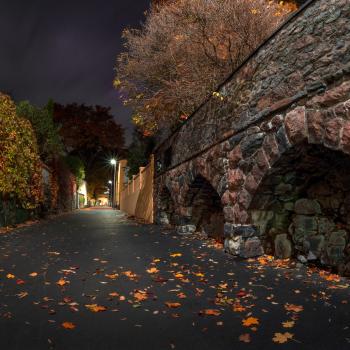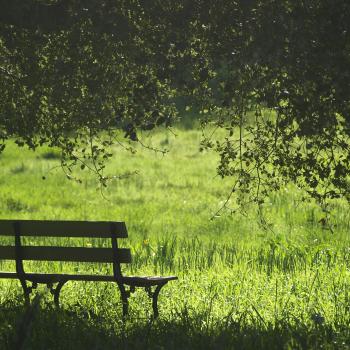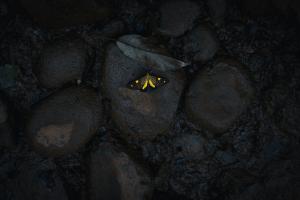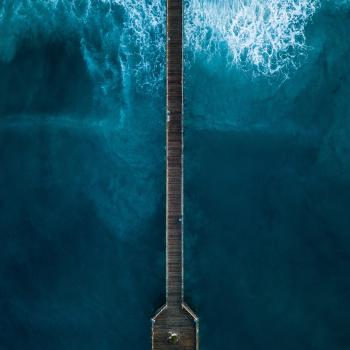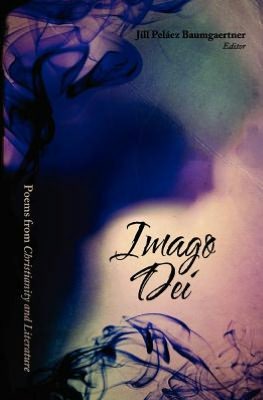 What does it mean to write poems in the Christian tradition? Creative writing teachers at Christian colleges wrestle with this question every day, as do many poets who write out of their grounding in Christian faith.
What does it mean to write poems in the Christian tradition? Creative writing teachers at Christian colleges wrestle with this question every day, as do many poets who write out of their grounding in Christian faith.
If I were teaching poetry at a Christian college, I’d hand my students the new anthology Imago Dei, published by Abilene Christian University Press. The poems—selected by Jill Peláez Baumgaertner, who teaches at Wheaton College and is Poetry Editor of The Christian Century and a poet herself—are drawn from the journal Christianity and Literature over its past sixty years.
What delights await the reader of this volume!
It’s no surprise to find in Imago Dei (Latin for “Image of God”) a poem on the Nativity or on Easter. But watch what Barbara Crooker does in “Cold Easter.” Beginning with an unusually chilly Easter day, she moves seamlessly into unexpected places:
a sputter of snow that turns the air white, but the grass
burns its green fire, and nothing sticks. Nothing lasts,
my mother says, fading from my eyes, and none of the fancy
tricks in the doctor’s bag can make her stay.
Unsurprisingly we find in Imago Dei poems focusing on gospel passages. Read what Robert Cording crafts in “The Man Running Naked into the Dark.” Beginning with the strange episode that occurs only in Mark (14:51-2), where “the soldiers / catch hold of his linen cloth, and the man twists away,” Cording astonishes us with his imagining of what it must have been like for this man to feel
Christ’s eyes
upon him and how, in them, he knows what it is
like to be entirely himself.
In Imago Dei there are, of course, poems about death. But watch Paul Willis’s unexpected playfulness in his sonnet “The Attempt,” recounting overheard phone calls reporting on a loved one’s dying:
You spoke it calmly for the hundredth time,
as if you were inscribing in the sands
a medical report before the climb
of tide erased it when you should replace
the dead receiver on the waiting hook.
I’d say it’s a surprise, though, to find Chris Willerton’s childhood memory of learning “How to Use the Kaleidoscope.” Willerton caresses each remembered detail of the amazing patterns he made by holding the kaleidoscope to the light and gently turning it. It’s lovely to watch his experience become a metaphor for God, with whom “each beauty is multiplied” and “The / moving force is your hand, invisible.”
It’s also surprising to read in Imago Dei Joseph Chelius’s “Heart Talk,” musing on the ways that family and medical staff encourage the poet’s nephew, who is in the hospital with heart disease. Chelius compares everyone’s supportive words (“Hang in there, Buddy… / we’re pulling for you.”) to “baseball chatter.”
that tactile conversation men employ
on the job or field:
the ball whipped round the horn
after competent play, smacking
the leather of each fielder’s glove
in short declarative sentences;
or the right tool passed up,
the flashlight beam as solid
as a knitting needle, threading
the way through a darkened place.
“How serviceable such gestures,” the poem goes on, “the pumped fist, the quick thumbs up.” Not a word in the poem explicitly about God, and yet isn’t this a perfect imago dei, image of God?
It’s an unexpected delight to read Shanna Powlus Wheeler’s “Opussum in Daylight,” intercutting an account of trapping the offending opossum (“Gray baby, we caught you / in a Havahart cage below the front step”) with apostrophes to the trapped creature (“O dew-tipped hair, O furred fear, O little body electric.”)
Another delight is Bill Ellis’s romp with Emily Dickinson in “Venetian Blinds, with Apologies to Emily.”
You can tell all the truth
by the way
they slant
—tilted into the sun
Finally, for the Image community there’s the pleasant discovery of many familiar poets in Imago Dei: Jeanne Murray Walker, Luci Shaw, Mark Jarman, Scott Cairns, Dana Gioia, and Robert Cording.
So, then, what does it mean to write poems in the Christian tradition? All of the above, and more.
Baumgaertner answers the question through her selection of poems, but also in the prose of her preface. The selected poems, she writes, share “an awareness of human experience as a part of a grand narrative, of the imago dei embedded in human nature, and of the sense of connection to something much larger than themselves.”
I suspect that the poetry of all religious traditions shares this awareness of human experience as part of a grand narrative. What is perhaps uniquely Christian, though, is the sense of God’s image embedded in our very human nature.
It is the wonder of incarnation that can make every word a Word.



